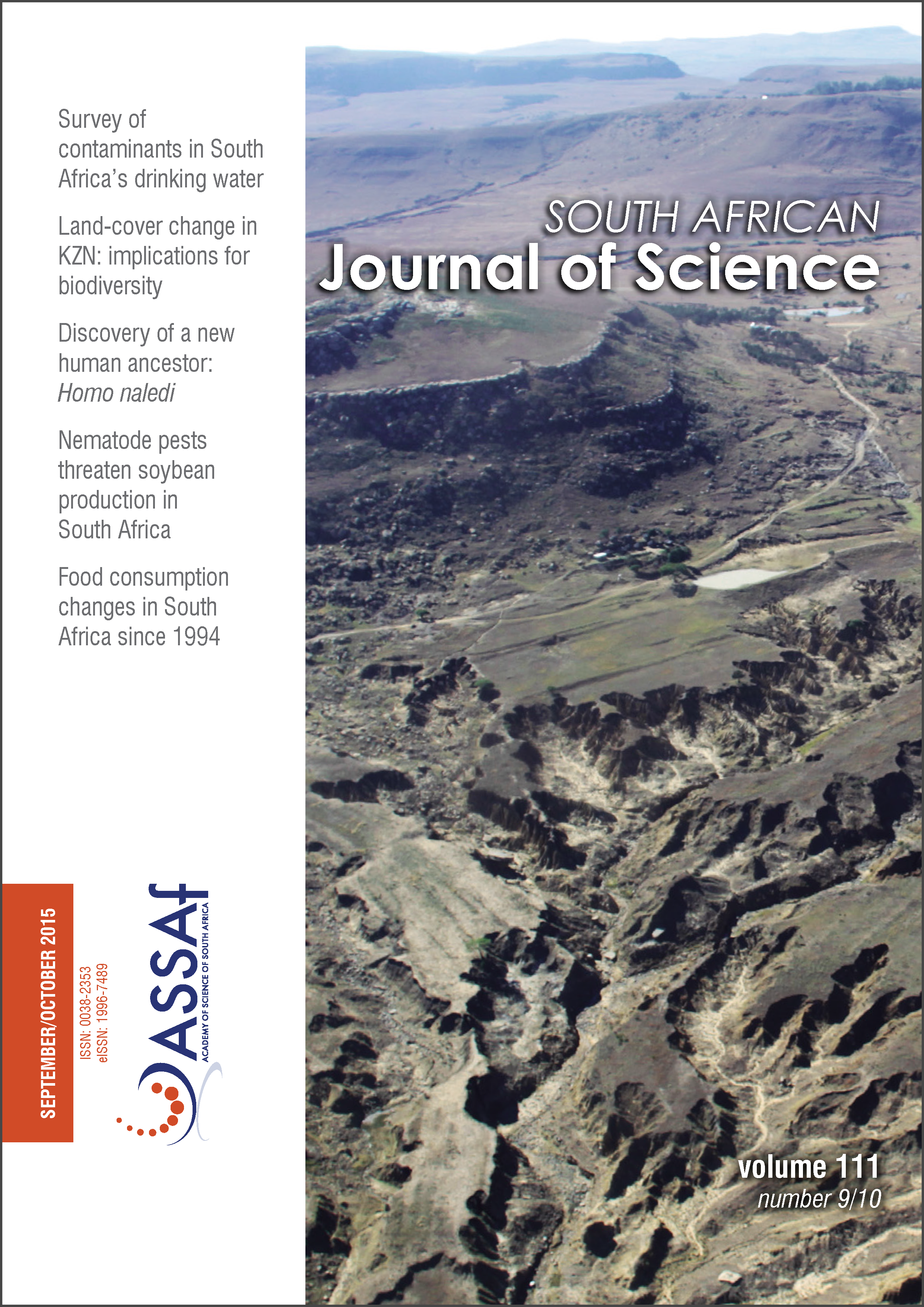Comparative morphometric analysis of the proximal femur of African hominids and felids
DOI:
https://doi.org/10.17159/sajs.2015/20140242Keywords:
size and shape, proximal femoral morphology, biomechanicsAbstract
Size and shape of the mammalian proximal femur and taxon-specific distinctions in the relative proportions of the proximal articulation, the femoral neck and the proximal femoral diaphysis, are critical determinants in its adaptation to differential biomechanical stresses and observed locomotor habitus in different taxa. The morphometrics of the proximal femur are considered equally critical in the assessment of locomotor habitus of extinct fossil mammals, particularly extinct Miocene anthropoids and Plio-Pleistocene hominins. Analyses of size and shape of k=10 dimensions of the proximal femur were undertaken for a large sample series of two extant mammal families – the Felidae and Hominidae – using conventional multivariate statistical procedures, commonly used size-correction methods, and post-hoc tests of significance. While significant differences in form do exist, there are equally striking convergences in the functional morphology of extant hominid and felid taxa. Multivariate and bivariate allometric analyses confirm that the proximal femur of these two mammalian families share a common underlying structure manifest in a shared first common principal component. Nevertheless, while considerable convergences in general form of the proximal femur of African hominids and large-bodied felids are apparent, there exist equally discreet distinctions which are consistent with the differential structural demands imposed by their distinct locomotor and behavioural habitus.
Downloads
Published
Issue
Section
License

All articles are published under a Creative Commons Attribution 4.0 International Licence
Copyright is retained by the authors. Readers are welcome to reproduce, share and adapt the content without permission provided the source is attributed.
Disclaimer: The publisher and editors accept no responsibility for statements made by the authors
How to Cite
- Abstract 372
- PDF 463
- EPUB 189
- XML 224
- Supplementary Material 160












.png)